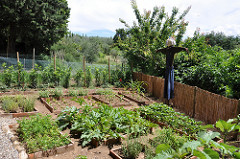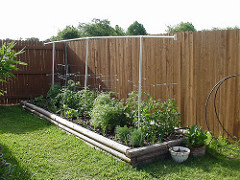
Making your own vegetable garden at home is a practical way of saving. Most gardeners most likely prefer to grow their own crops at home if space permits for several advantages. It is economically wise, guaranteed to be safe and tasteful. But how does vegetable garden works? Is it challenging or somehow similar in growing flowering plants?
This article will mainly discuss the different ways for starters to learn how to grow crops at their backyard and to encourage others to take advantage of the benefits of planting what you eat.
Choose Your Vegetable Plot
Soil is an important factor in growing crops. Ordinary soil is fine for vegetable gardening. However, if your soil is quite sandy or full of stones, the remedy is to create garden beds that will allow you to filter the soil to be used.
What to Grow
Though most vegetables can grow in an ordinary soil, maximize its use for your favorite vegetables. Do not grow easy and cheap vegetables available in the market or maybe rarely found vegetables in shops.
The Right Spot
If you have enough space in your garden, choose a spot that is airy and with direct exposure from the sun. These vegetables are sun lovers – they won’t grow well if they are slightly shaded. Avoid areas under trees and thick walls or fences.
The need for a wheelbarrow is a necessity so as much as possible for your plots to be near pavements or concrete pathways as much as possible. Furthermore, it is not advisable to choose a spot that is hidden, this is not ideal during harvest time. This can also cause an issue for water supply. If the area is far from the supply, you need more time and effort in giving them water.
Green Compost

After crop removal, it is important that you don’t leave the soil unattended as nutrients won’t sustain the next cropping season. The best way to improve or maintain the soil’s fertility is to use green compost. Green manures are expected to:
- Increase soil’s fertility – the soil needs nitrogen fixing bacteria plants to increase its richness. Usually, legumes are planted like peanuts to make the soil ready for the next cropping.
- Improve the soil structure – after the crop removal soil becomes bare and it needs help to remain rich.
- Maintain soil structure – the soil needs to be protected against erosion and transpiration.
Watch out: Pest and Sickly Plants
Keep your plants healthy and green by checking on them most of the time. It is very important that you thoroughly verify that each of your plants is growing well or else you won’t harvest anything. Spray it with insecticides if possible or pick off infested foliage because this is a sign that it is poorly growing.
Growing vegetables at your own yard is both fun and practical. You get to eat what you want without spending anything, and it is hassle-free at the same time because you don’t need to go to the market to shop. Most importantly, harvesting your own crops offers you a sense of fulfillment and a way to enjoy fresh veggies too!

